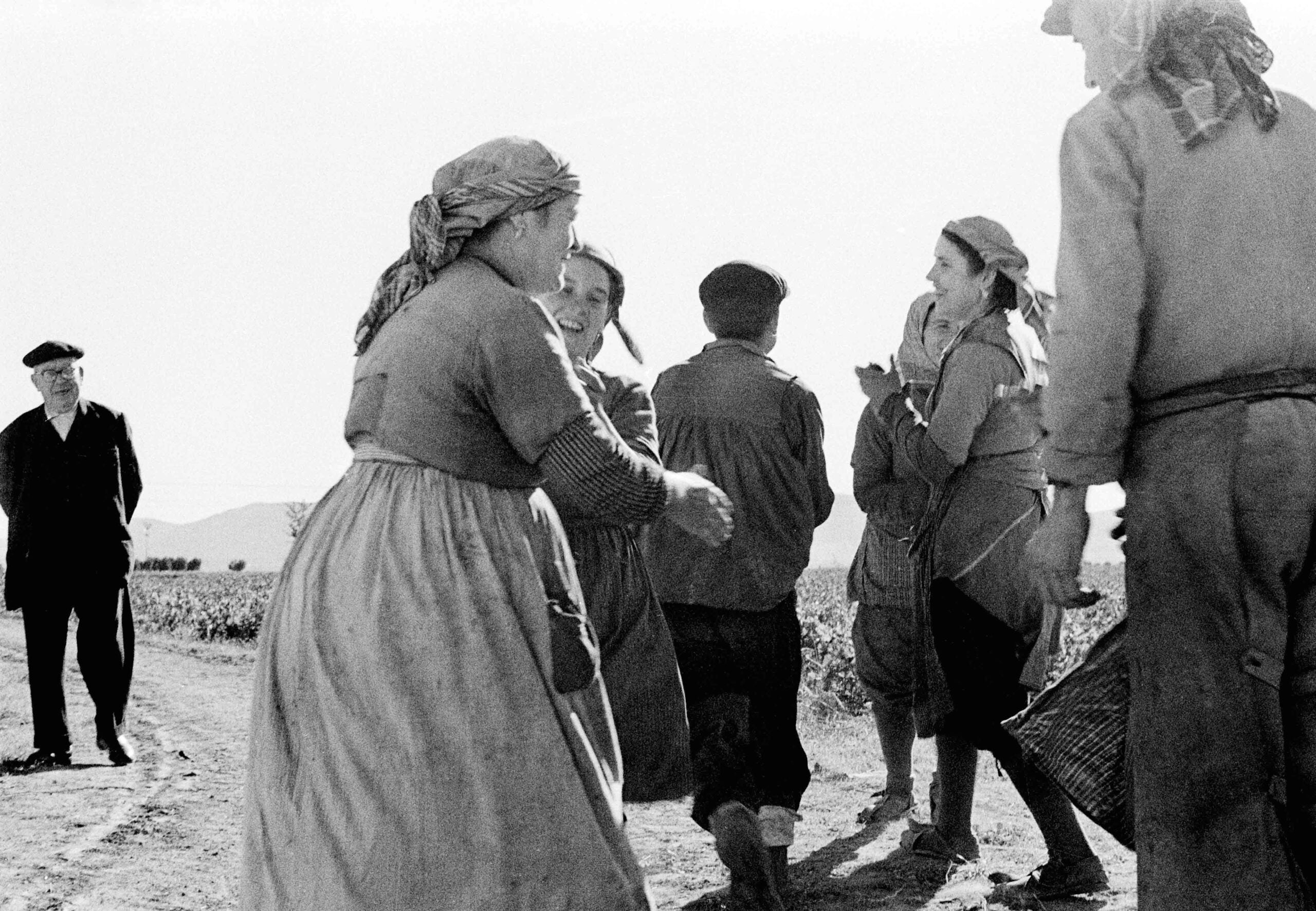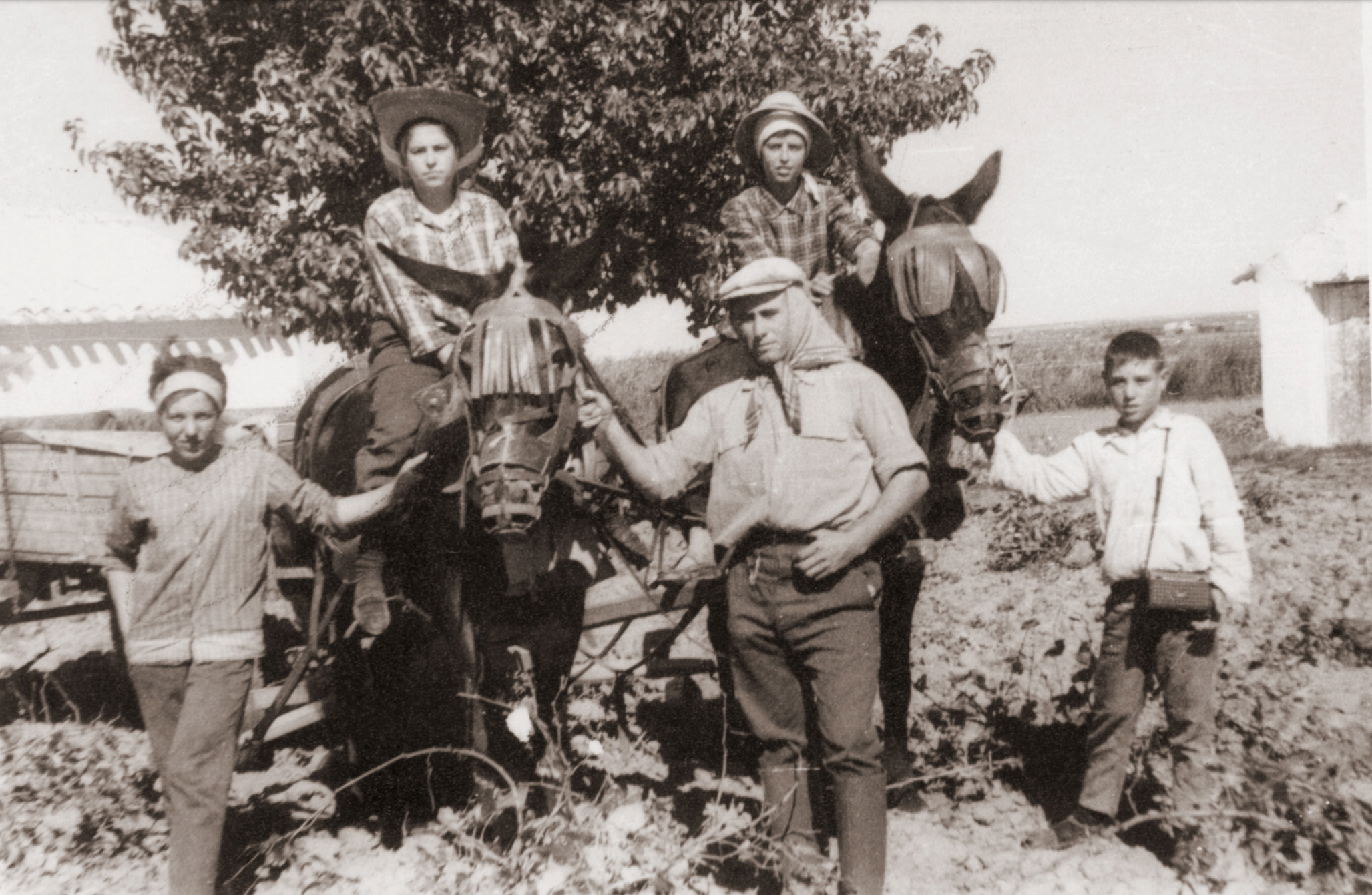Efemérides: La Vendimia
Cuando pisa racimos
tu abarca verde,
tu pie se vuelve sangre,
mi sangre nieve.
Pisa las uvas,
que como mis amores
ya están maduras.
"Canción de los vendimiadores", Los hijos de la piedra
— Miguel Hernández

The grape was considered a divine gift to bring pleasure and delight to mankind.

It’s the end of summer: still a scorching heat, and our bare feet are wet with must that gushes between the toes. The Talmud says, ‘There is no joy without wine,’ and wine has been with us since the beginning of civilization. We understand that joy has been with us just as long. Here in the Mediterranean, wine is a unifying element of society, deeply connected to our way of understanding life. The first miracle Jesus performed, according to the Gospel, was turning water into wine, and at the Last Supper, turning wine into His Blood. But even before that, the grape was considered a divine gift to bring pleasure and delight to mankind.
It is likely that the Greeks from Asia Minor were the ones who brought the first vines to the Spanish shores. Wine has been produced on the Iberian Peninsula for over 2,000 years, and the vine doesn’t thrive in just any soil. Grapes require contrasts: cold winters and hot summers. From the time they awaken from their winter slumber in spring until the clusters are perfectly ripe for harvest, whether day or night, anything can happen: storms, frost, hail, plagues. Extremes of too much or too little sun. Viticulturists never fully rest.
That’s why the vendimia has always been celebrated with such joy. As the saying goes, ‘Por San Miguel, vino y miel’—which translates as ‘By Saint Michael (29th of September), wine and honey.’

La Vendimia by Harry Gordon 1959


The grapes have ripened during the summer, and around this time, in the second half of September, they reach their peak maturity and must be harvested. The technique is simple: a farcino to cut the stem, a canasto to collect the clusters, larger cuévanos to empty the canastos, and horses or tractors to transport the cuévanos to the winepress.

The farcino is a handheld tool with a wooden handle and a sharp, curved blade used to cut grape clusters during the harvest. In Rioja, it’s known as a gañivete, and in Catalonia as a podall. In other regions, it’s known by names such as corquete, tranchete, and more.

Harvest time is festive, filled with hope and gratitude for a good crop. It symbolizes the culmination of the farmer’s labor, who reaps the fruits of what was sown. In vineyard regions, friends, family, and neighbors often put aside their tasks to lend a hand with the vendimia. It’s a pause in the daily routine and also a time for hospitality. The producer should provide shelter, lunch, and dinner for the harvesters. Bottles from previous vintages are brought out from the bodega con alegría. While picking the grapes, tradition calls for singing. As songs fill the air and work continues, new couples emerge. Stories of love and intimacy beneath the vines have been told since before they could be written.
Enriquezco tu mano
cortando uvas
cubiertas por los soles
y por las lunas.
¡Ay si quisieras
que cortara tus besos
con mis tijeras!
"Canción de los vendimiadores", Los hijos de la piedra
— Miguel Hernández



The vendimiador begins at dawn, which in the past could mean long walks during the night to be in the vineyard by daybreak. Grape ripening requires specific timing for harvesting, and this window is brief with a delicate balance: it’s important to avoid harvesting grapes that are wet from rain, dew, or fog (as moisture can affect the must), and it’s also unwise to harvest during the hottest part of the day to prevent early fermentation. The vendimia must continue without interruption, and the grapes need to move from viña to the bodega as swiftly as possible. For all these reasons, this is the vineyard’s busiest time, a process of just a few days where the work of an entire year is at stake.
Now, horse-drawn carts have mostly been replaced by trailers pulled by tractors, and wicker canastos have given way to fiberglass baskets. Yet, at its core, the grape harvest is still as it was before—done by hand. The smaller or more inexperienced hands pick the grapes, while the people working in the winery control their temperature, the press, and other processes.
In Spain, traditional vinification starts with the treading of grapes on the tread. This breaks the grapes open without crushing the seeds, releasing the juice and preventing bitter flavors in the wine.
For clarete, the must is separated from the pomace in the press and immediately placed in vats and barrels where it ferments. In the case of blanco (white wine), the must ferments on its own. For tinto (red wine), the must is kept with the pomace and left to ferment at rest in the winepress. After the necessary days during which fermentation and the maceration of skins, seeds, and pulp take place simultaneously, the young wine is transferred to vats and barrels for the fermentation to continue.

The red wine (tinto) that undergoes short maceration is meant to be enjoyed as a young wine (vino joven). Wines with longer maceration are reserved for aging and spend the required time in barrels: crianza for six months, reserva for one year, and gran reserva for at least two years. The time in barrels is complemented by additional bottle aging until the wine is finally ready for consumption.
In many wine regions of the Old and New World, Harvest Festivals are held. At the end of summer (each in its own time), the first grapes are pressed, the must is offered to the local patron, a Reina or Bodeguera Mayor is selected, and, for one day, the town’s fountain flows with wine instead of water.

Sofía and her family during Las Fiestas del Vino, Valdepeñas
At times, these are simple festivals, expressing gratitude for the harvest, blessing the fruits, and toasting to the new cycle that begins anew. In other cases, however, they become almost like a carnival. This happens every September in La Rioja, where the most important event is the offering of the first must to the Virgin of Valvanera, the patron saint of the region. Once the authorities have tasted it and offered it to the crowd the San Mateo festivities begin. After that, winemaking in the cellars can start. And the fiesta really kicks into high gear.
Quevedo (the poet of the Siglo de Oro, not the Canarian singer) once wrote that:
Para conservar la salud y cobrarla si se pierde, conviene alargar
en todo y en todas maneras el uso del beber vino, por ser,
con moderación, el mejor vehículo del alimento y la más
eficaz medicina.
To maintain health and recover it if lost, it is advisable to prolong in every way the use of drinking wine, for it is, in moderation, the best vehicle for nourishment and the most effective medicine.
El Gran Señor de los Turcos
— Francisco Quevedo
We’re not so sure that wine is as amazing as a medicine as Quevedo defends, but we do love it, and what we know is that in an age of high speed and virtual reality, it’s very important not to forget our bond with the soil, and it’s even more crucial to celebrate it.
